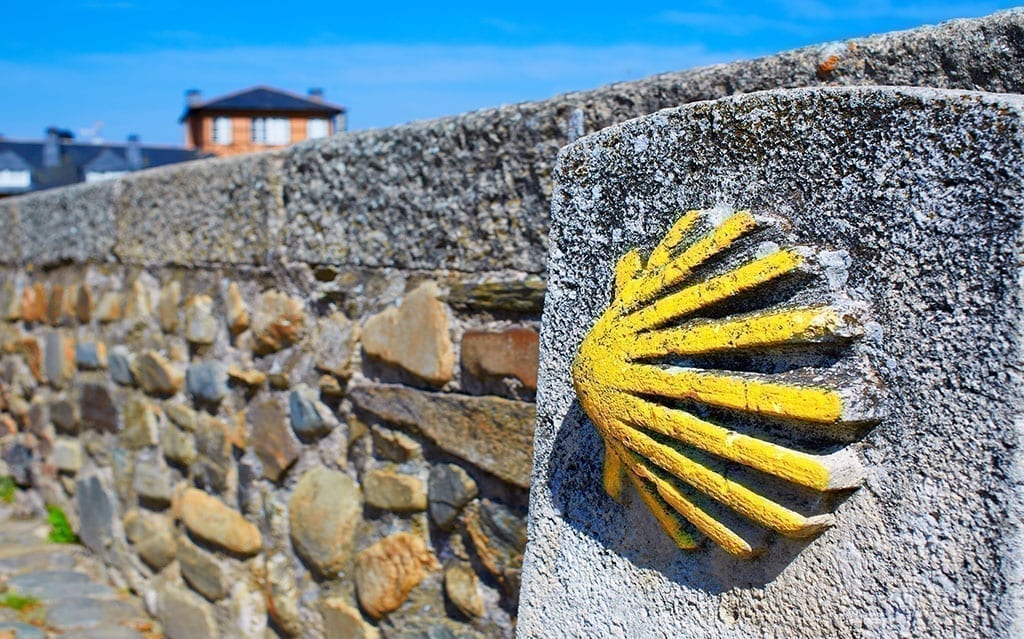- What Should You Consider Before Preparing Your Camino?
- How Much Free Time Do You Have to Do the Camino?
- How Fit Are You?
- On Foot or by Bike?
- How Many Miles Do You Need to Cover to Get the Compostela?
- At the End of the Stage, I Must Find Where to Sleep
- Time Needed to Perform Each Route
- Enjoy the Camino de Santiago Without Rush
We are facing a question that is very common among pilgrims during their preparation to walk the Camino de Santiago. There is not a single answer, as there are many variables to consider: how much time you have, what distance you want to cover, on foot or by bike, etc… In the following article, we will analyze what you need to consider to answer the question of how long it takes to do the Camino.
What Should You Consider Before Preparing Your Camino?
In the Jacobean routes, there are “miles and miles to get bored,” as they say, although, on the Camino, there is nothing boring. Some walk the last 62 miles (100 km) of the Camino in Galicia, and others undertake adventures from North Cape in Norway or pilgrimages from Jerusalem. The routes to Santiago de Compostela are not infinite, but they are as extensive as the planet.
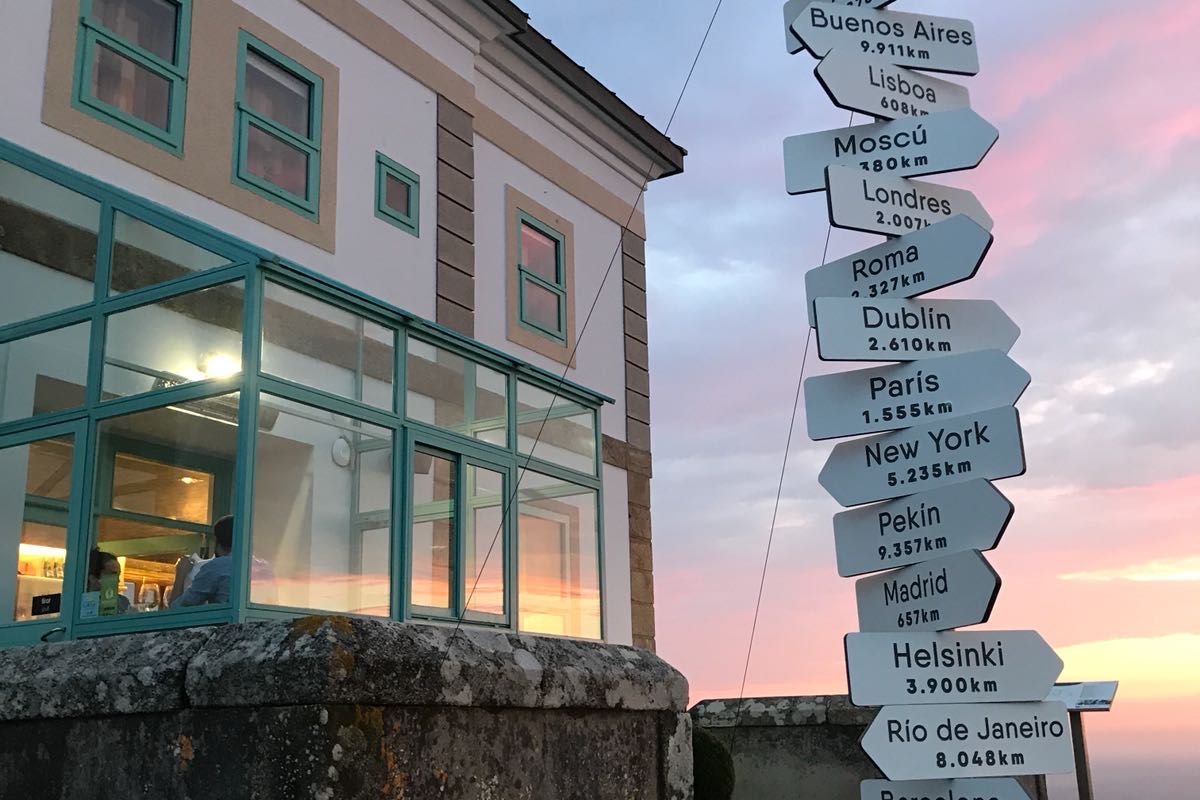
The Camino de Santiago has many miles to go until Cape Finisterre, the End of the World
Therefore, the question of how long it takes to do the Camino has a very open answer, and it basically depends on your interests and possibilities. Let’s see what you need to consider to solve this question: considering that we are talking about time, this will be the first thing to consider.
How Much Free Time Do You Have to Do the Camino?
This is the first question you need to ask yourself. If you are an active worker, you need to consider the vacation time you have from your job. If you are a student, you have the summer holidays, Easter, or Christmas. And if you are lucky (and deserve it) to be retired, the whole world’s time is yours (unless you have grandchildren!).
Ideally, you should have at least a week to travel some of the best routes of the Camino de Santiago in five stages. With seven days, you will have more than enough time to experience the Camino, get to know Santiago de Compostela, and enjoy the pilgrim experience.
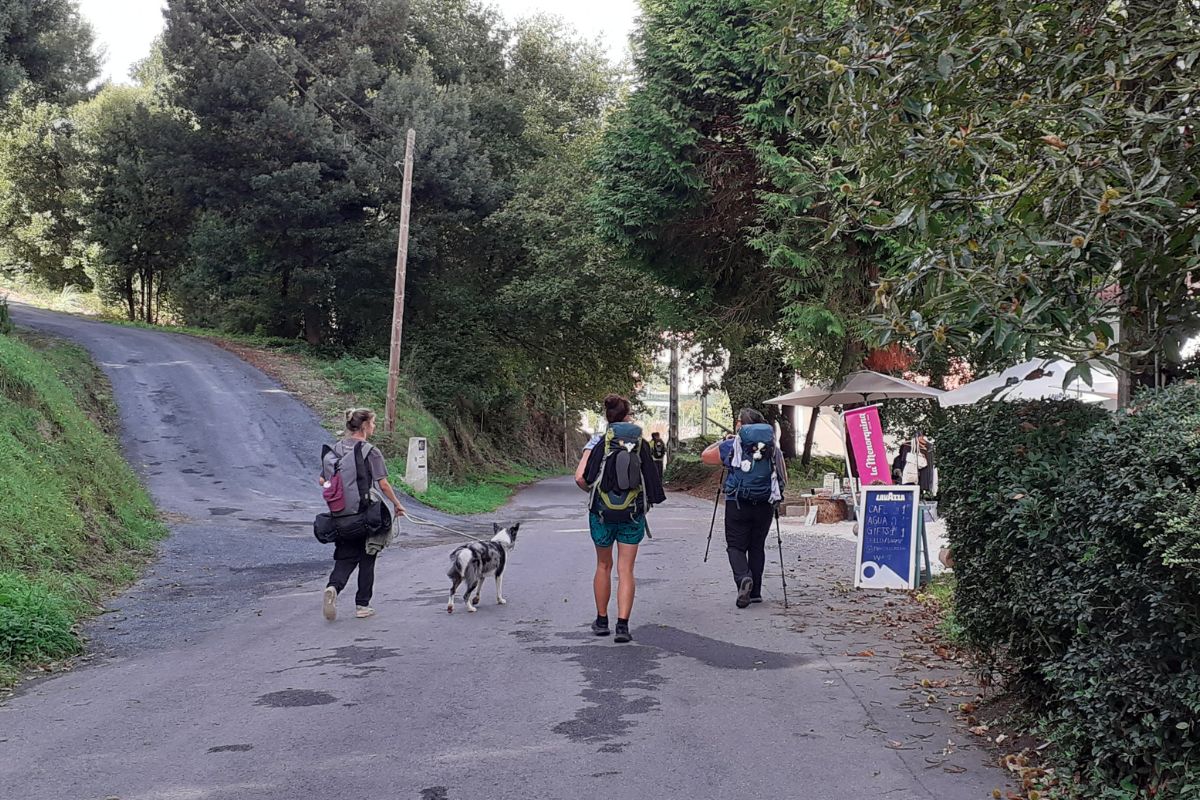
Pilgrims finishing the Portuguese Way, a route you can enjoy in a week
Even in fewer days, you can complete a route, but… do you have more time? 2 weeks? A month? The Camino provides, and you can organize a trip to Santiago de Compostela depending on the time you have.
How Fit Are You?
Your physical fitness and walking habit are no less important. If you are an athlete, you can cover the distance you propose, but if you are not very used to walking, you might prefer short and accessible routes.
Either way, prior physical preparation is always highly recommended, and with it, you can calmly consider doing the Camino de Santiago. The Camino is for everyone, and there are easy and beautiful Jacobean routes suitable for any pilgrim.
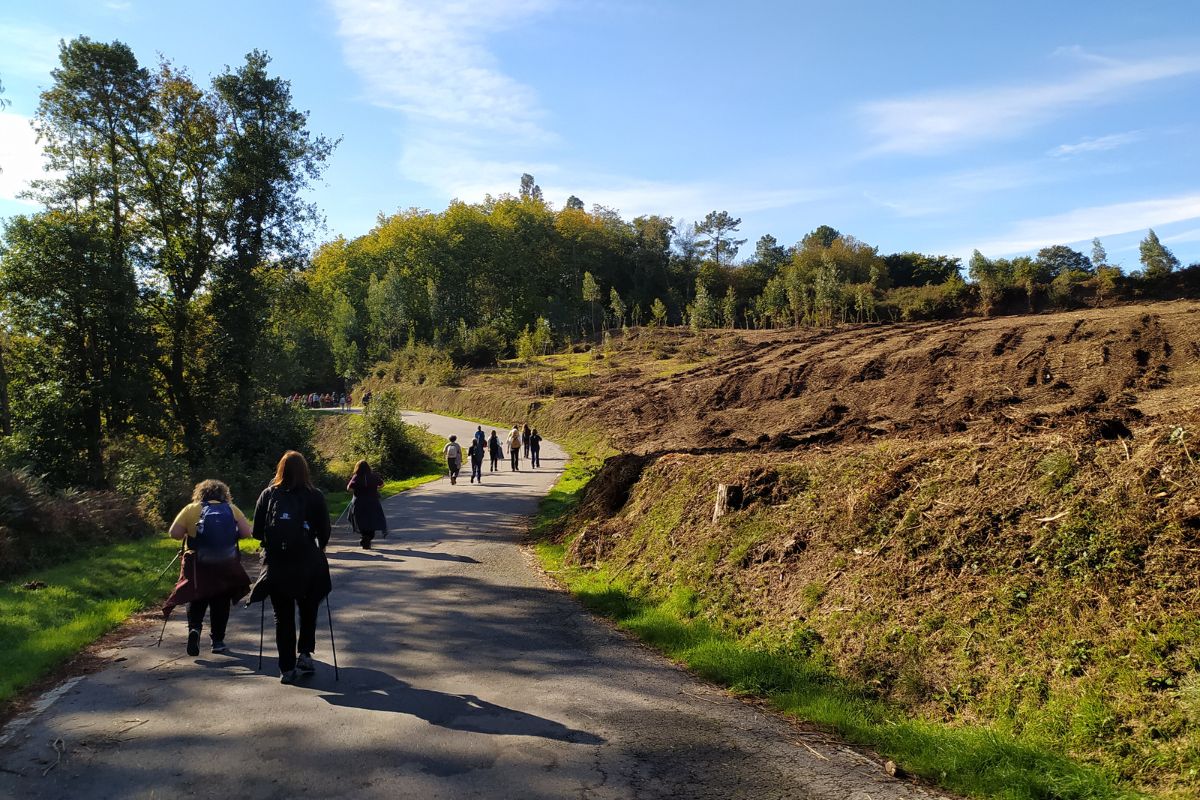
Pilgrims doing the English Way, a short, easy, and beautiful route that you can complete in a week
Keep in mind that the average path of a pilgrim can range between 2.2 and 3.1 miles per hour. Also, there are always stops to rest, snack, take photos, or chat with local people and other pilgrims. Consider that on the Camino, the average is between 12.4 and 15.5 miles per day, so you will be walking between 5 and 6 hours per stage.
And in this regard, to conclude, we must think about some stages, which may present great difficulty due to demanding slopes and many uphill climbs. In these stages, the speed will drop, the mileage too, and maybe you decide to divide the stage into two, to not get too tired and enjoy more. Even many pilgrims, when doing very long routes, include a rest day without walking.
On Foot or by Bike?
The vast majority of pilgrims do the Camino on foot, and so say the most recent statistics. However, many decide on two wheels, and doing the Camino by bike means you can cover double the distance than on foot. The Camino days will be the same, but the distance covered can be, and generally is, greater.
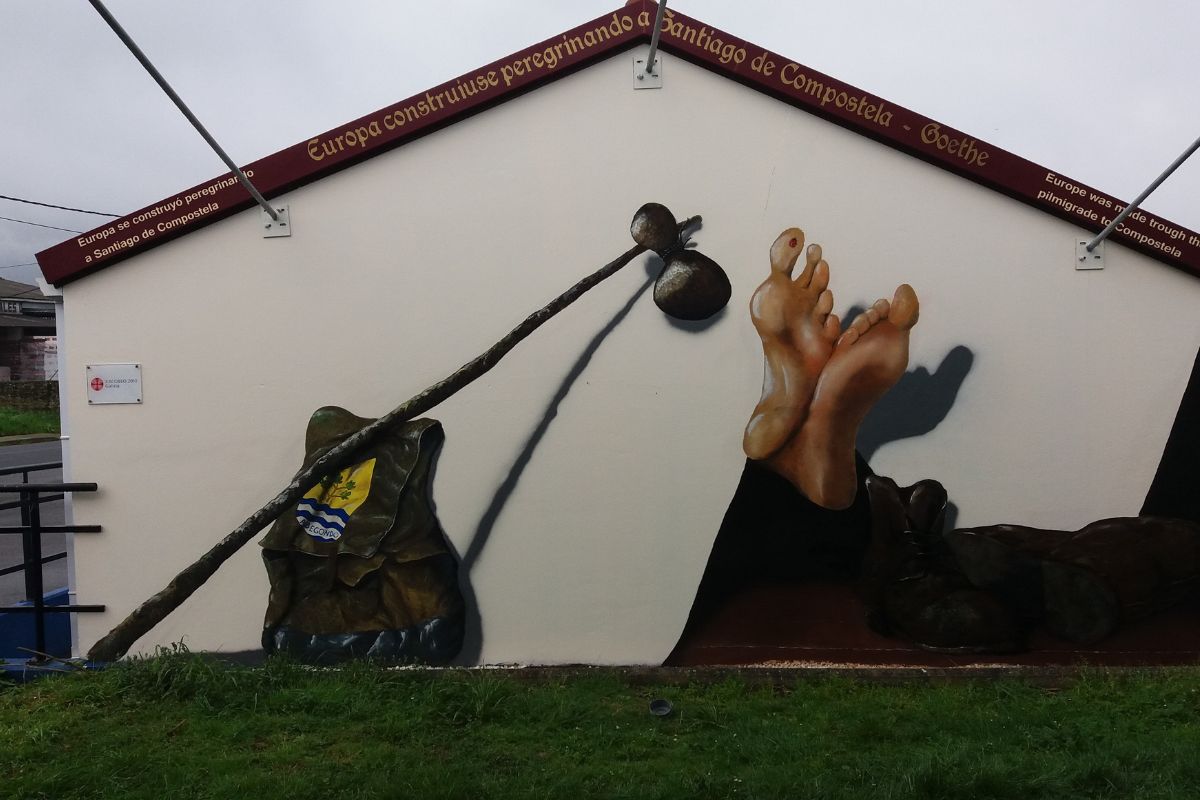
Mural of a walking pilgrim resting on the English Way from Ferrol
How Many Miles Do You Need to Cover to Get the Compostela?
This is another influencing factor, of course. There are many pilgrims, especially those who are doing the Camino de Santiago for the first time, who want to obtain this precious document.
To get the Compostela, you do not need to cover many miles and, therefore, you do not need many days. You must consider that if you do the Camino:
- on foot, you need to cover 62 miles (100 km);
- by bike, you need to pedal 124 miles (200 km).
That is, 5 or 6 days is more than enough to cover these distances, although yes, always arriving in Santiago de Compostela.
At the End of the Stage, I Must Find Where to Sleep
Of course, this also influences the division of stages and, consequently, how long it takes to do the chosen Camino. This is not a minor issue since before designing each stage we must consider where we are going to sleep.
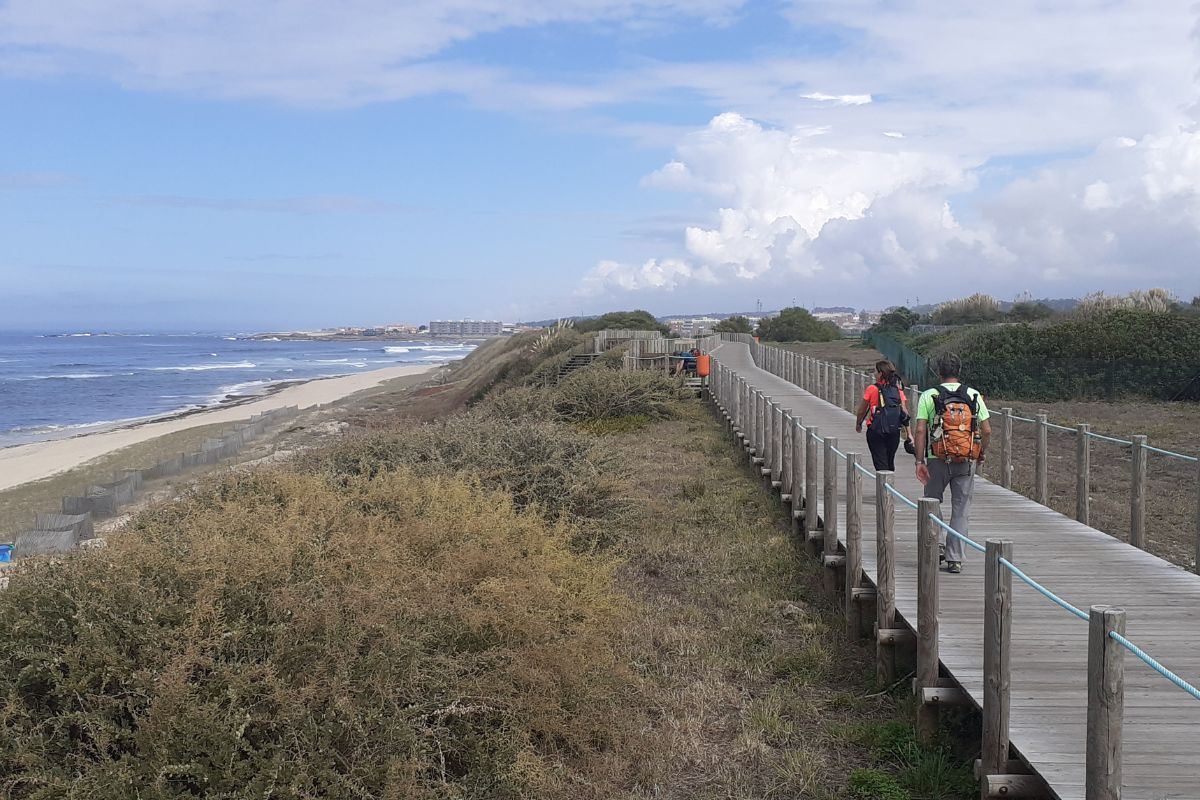
Pilgrims walking on the Portuguese Coastal Way arriving at their accommodation at the end of the stage
Many times we would like to walk 12.4 miles, but sometimes it is not possible because at that distance there are no towns or hostels to stay overnight. And if you road the Camino by bike in one week or more, check if they have space to store your two-wheeled companion.
Time Needed to Perform Each Route
Having said all this, let’s get down to business and look in detail at the long and short routes available for the Camino de Santiago. We consider the official routes, which qualify for the Compostela and are undertaken on foot.
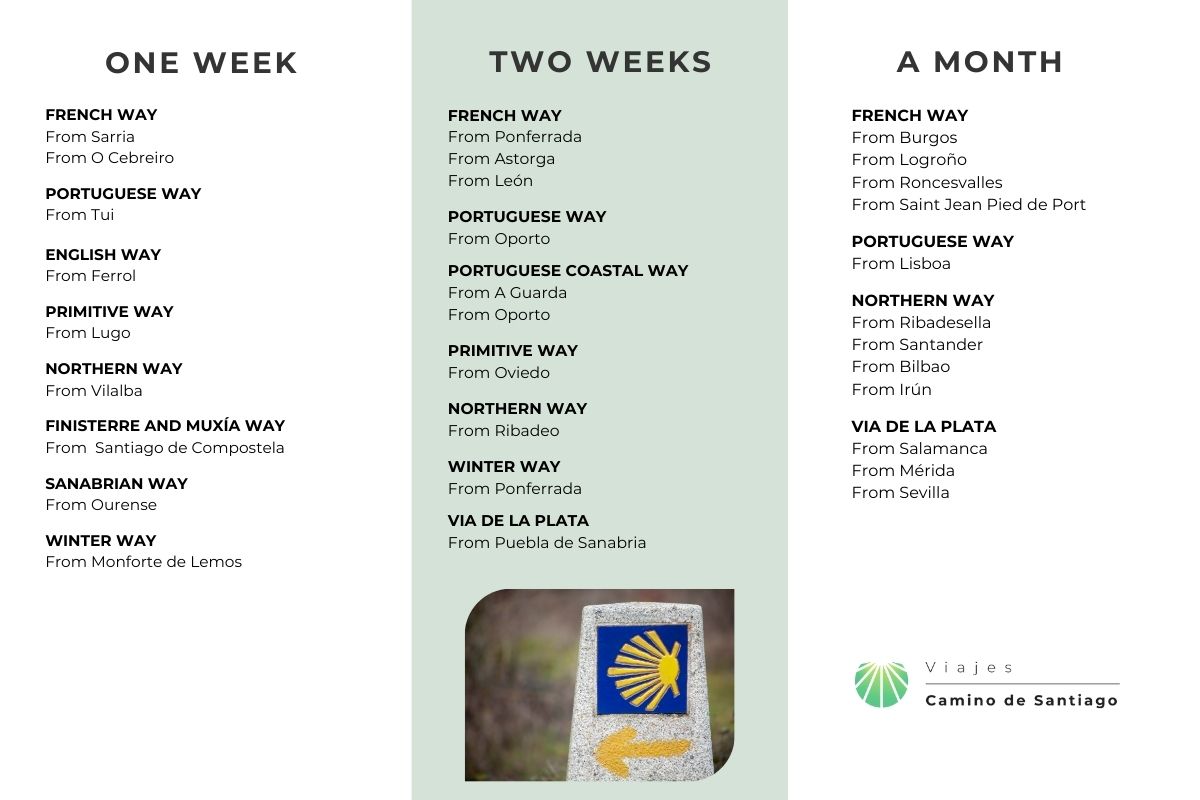
Routes of the Camino de Santiago by duration
- French Way:
- From Sarria, with 68 miles, about 5 or 6 stages;
- From O Cebreiro, with 99 miles, 7 or 8 stages;
- From Ponferrada, with 120 miles, about 9 or 10 stages;
- From Astorga, with 165 miles, about 11 or 12 stages;
- From León, with 194 miles, about 13 or 14 stages;
- From Burgos, with 303 miles, about 21 or 22 stages;
- From Logroño, with 378 miles, about 26 or 27 stages;
- From Roncesvalles, with 477 miles, about 32 or 33 stages;
- From Saint Jean Pied de Port, with 492 miles, about 33 or 34 stages.
- Portuguese Way:
- From Tui, with 75 miles, about 5 or 6 stages;
- From Porto, with 149 miles, about 12 stages;
- From Lisbon, with 373 miles, about 27 stages.
- Portuguese Coastal Way:
- From A Guarda, with 92 miles, about 8 stages;
- From Porto, with 149 miles, about 11 stages.
- English Way:
- From Ferrol, with 76 miles, about 5 stages.
- Primitive Way:
- From Lugo, with 62 miles, about 5 stages;
- From Oviedo, with 199 miles, about 14 stages.
- Northern Way:
- From Vilalba, with 73 miles, about 6 stages;
- From Ribadeo, with 118 miles, about 9 stages;
- From Ribadesella, with 239 miles, about 19 stages;
- From Santander, with 329 miles, about 24 stages;
- From Bilbao, with 404 miles, about 29 stages;
- From Irún, with 503 miles, about 36 stages.
- Finisterre and Muxía Way:
- From Santiago de Compostela, with 75 miles, about 5 stages.
- Sanabrian Way:
- From Ourense, with 68 miles, about 5 stages.
- Via de la Plata (continuing on the Sanabrian Way):
- From Puebla de Sanabria, with 155 miles, about 10 stages;
- From Salamanca, with 295 miles, about 18 stages;
- From Mérida, with 463 miles, about 28 stages;
- From Seville, with 593 miles, about 37 stages.
- Winter Way:
- From Monforte de Lemos, with 82 miles, about 6 stages;
- From Ponferrada, with 163 miles, about 11 stages.
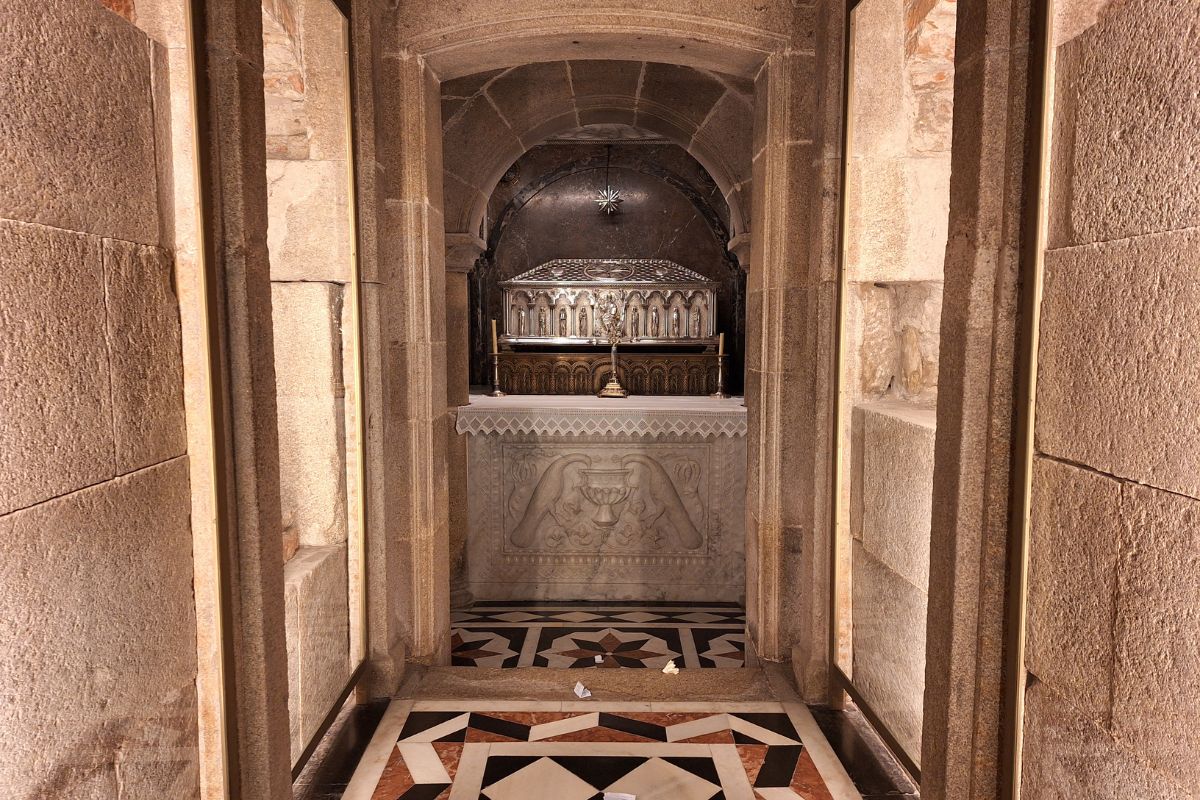
Tomb of the Apostle James, which has been waiting for you for centuries
Enjoy the Camino de Santiago Without Rush
The Camino de Santiago is not a competition, and no one is going to win any medal for arriving first at the end of the stage. Remember that Saint James the Apostle has been waiting for you at the Cathedral for centuries! Moreover, if you have your trip organized to the Camino de Santiago, you won’t have to worry about where to sleep, your luggage, or anything. It’s that simple, that easy: take a few days, choose your Camino, and discover a journey that will change your life.

